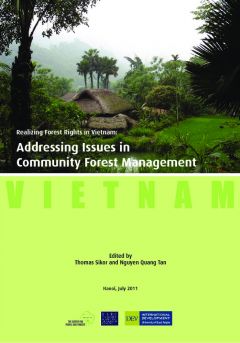Resource information
In Vietnam, forests have been under state stewardship for a long time. Degradation of forest resources under state management together with the high costs of forest protection has led to increased involvement of local people in forest management. Since the early 1990s, the Government of Vietnam (GOV) has been promoting the allocation of forest rights to local people as the foundation for development of community forest management (CFM). The initiative, known as Forest Land Allocation (FLA), has been undertaken in various parts of the country, with mixed results. This raises an important question: how can forestland allocation be improved so that community forestry can both support local livelihoods and provide environmental protection?
With funding from the British Economic and Social Research Council (ESRC), the School of International Development at the University of East Anglia (UEA) and RECOFTC – The Center for People and Forests, a small initiative on “Property Reforms and Forest Rights in Vietnam” was undertaken. The initiative aims to identify key issues influencing the success or failure of community forestry in various parts of the country and to discuss implications for policies on forest management and rural development.
The document at hand is a product of a group of carefully selected researchers, policy experts, and practitioners seeking to share their experiences and viewpoints based on previous or on-going work. It is by no means a comprehensive discussion of all the issues related to community forest management in Vietnam. Nevertheless, it is hoped that the issues brought up by the authors in the document will shed light on some of the important aspects of community forest management in Vietnam and can serve as the starting point for further development of community forest management in the new context in Vietnam.


